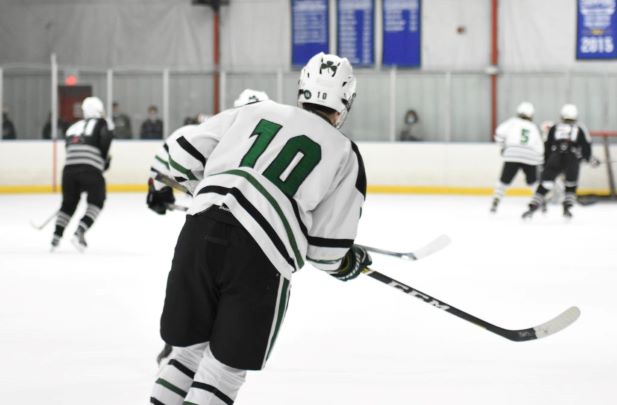Remembrances of Silent Ice
July 7, 2021
My car door opens, meeting the sharp, crisp January wind biting at every opening in my jacket. The ice beneath my feet is thin, but I know I am going somewhere with thicker ice.
There is something oddly calming about Iceland Arena’s parking lot full of cars. The absence of life outside signals that inside is full of life.
The cold bites at my chin as I enter the rink. The rubber floors give off the smell of bleach, a sign they’ve been cleaned. The scent is all too familiar.
The lobby is empty except for those who watch their children through the glass. The only noises inside are the faint humming of the concession stand’s slushie machine, which has most likely been in the same state since I was seven years old, and the constant replaying of a crane game theme song.
Once I pass through the double doors separating the lobby from the locker room hallway, nothing changes, each entrance a blue- and white-lined wall.
The hallways stand quiet except for the faint chatter of children preparing for practice. I wait to hear more mature voices filled with witty remarks and occasional voice cracks.
The hallway remains silent until a click of metal signifies the children have left for the south or north rink.
Strange emotions come when a place usually full of noise is quiet. The room seems almost alien. The floor is filled with deflated, gearless hockey bags left behind by players. Was I late?
As I dress, the tight and cold Under Armor shirt clings to my body, robbing it of any heat. The process of putting on hockey gear is faster than one would think. The equipment appears bulky but is relatively lightweight and offers mobility in the shoulders and chest.
I step out into the rink, waiting for the familiar sounds. Skates are skittering and churning, with the occasional clap of a stick on the ice. The cold air bites through the holes in my gloves, and numbness soon comes. The only cure for numbness is to skate, to move.
The stick-and-puck players today are mostly men who aren’t very adept at skating. Their postures are crooked and their backs bent to the point where I can almost feel the pain in my spine by looking. Their strides are short and whimpering.
The most noticeable thing is their voices. They have none. They don’t communicate by yelling at each other. Instead, the players give the puck to whomever, like a telepathic gesture.
Participation in games like these is impressive when a significant part, communication, is taken away. It requires mental repetition when adjusting to the new style.
A new game emerges — stick and trust. Players must rely on each other to know where they should be and what they are doing. The noise of players calling plays, names, and positions is changed.
Without ice banter, there is just the silence of skating and the constant thought of what could happen next.


